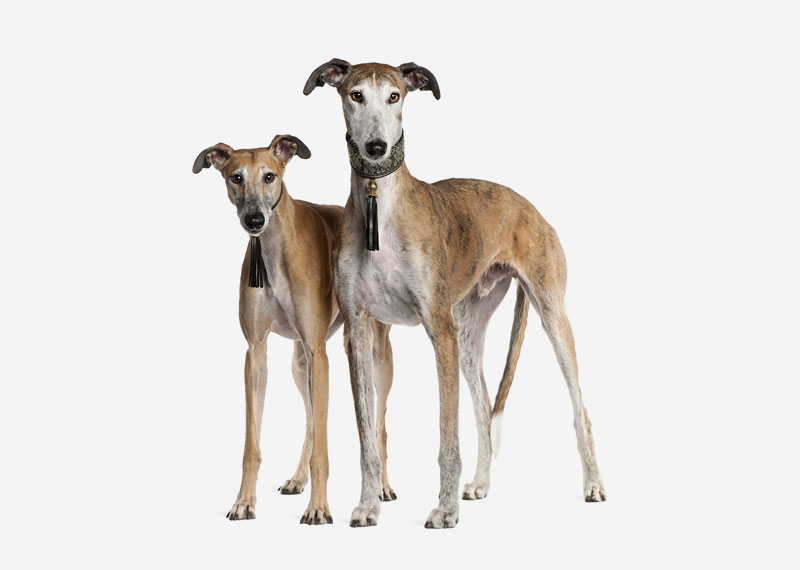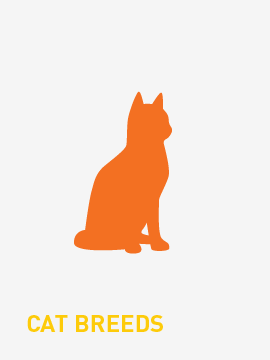The Galgo Español (Spanish galgo) or Spanish greyhound is an ancient breed of dog, specifically a member of the sighthound family.
The Greyhound is possibly a descendant of the Spanish greyhound and, for several years in the 20th century, some breeders did cross-breed Galgos and Greyhounds in order to produce faster and more powerful Galgos, specifically for track racing purposes.
History
The Galgo is not only "the Spanish greyhound" but also "the Spanish dog".
Its name is probably derived from the Latin "Canis Gallicus" or "Dog from Gaul". The Spanish word for all kinds of Greyhounds - including the Galgo - is "lebrel", which means "harrier" or "dog for chasing hares", since "liebre" is Spanish for hare. We can see the same derivative in the Italian "levriero" and the French "lévrier".
The first written references to an ancient Celtic sighthound, the "vertragus", in the Cynegeticon#Cynegeticon of Flavius Arrianus (Arrian), Roman proconsul of Baetica in the second century, may refer to the Galgo or more likely to its antecedant.The author Arrian, during his personal experience in Spain, describes hare hunting with Galgos in a manner almost identical to that used nowadays in Spain, adding that it was a general Celtic tradition not related to a social class.
He indicates that there were not only smooth haired types of the vertragus but also coated ones.There is little evidence on the Galgo or its antecedant in the first centuries of the Middle Age but it appeared to survive and flourish in the second half of this period.In the 9th and 10th centuries great spaces in Castile (historical region) were colonized, coinciding with the Reconquista, resulting in the Christian military repossession of the Iberian Peninsula from the Muslims. This open land introduces a new character to hunting with dogs: while the North of Spain is mountainous, the regions progressively recovered from the Muslims were flat, open areas full of small animals like hares, which provided the Galgo a useful opportunity to hunt. At this time, it is considered a noble dog, and kept mainly by aristocracy, both in the Christian and the Muslim Kingdoms in which the Spanish territory was still divided at the time. It is likely that the Galgo and Sloughi were interbred at this period.The great esteem in which the Galgo was held is visible in the many laws of the time designed to punish the killing or theft of this dog: Fuero of Salamanca (9th century); Fuero of Cuenca; Fuero of Zorita de los Canes; Fuero of Molina de Aragón (12th century); Fuero of Usagre (12th century).
In the Cartuario of Slonza we can read a will written in Villacantol, in which, using an odd mixture of Latin and Spanish, the Mayor Gutiérrez bequeaths a Galgo to Diego Citid in the year 1081:
:::"Urso galgo colore nigro ualente caetum sólidos dae argento";
:::"a black Galgo with patches of silver";The fact that this dog was a significant item in a noble's will, demonstrates the great value that it was given at the time.The mural paintings at the San Baudelio de Berlanga, in provincia de Soria, dating from the 12th century show a hunting scene with three Galgos apparently identical to the ones that we can see today.
In the Renaissance Martínez del Espinar writes in his book "Arte de Ballestería y Montería" ("The Art of Hunting and Archery"):
:::"Muchas maneras hay de matar estos animales". (las liebres) "Muchas, diré las que en España usan: correnlas con galgos, que aquí los hay ligerísimos, y así mismo lo son algunas liebres, que se les escapan sin poderlas alcanzar; y no porque corren hoy dejan de volver a sus querencias; antes estas liebres corredoras las continúan, porque tienen conocido el camino de su uida, y por la mayor parte se encaman cerca de alguna senda o camino orilla de algún soto, monte o ladera, o tierra pedregosa, y así huyen de ellas y de ir cuesta abajo que las alcanzan luego en las laderas y tierra tiesa, parece que vuelan".:::"there is a large variety of ways to kill these animals". (the hares) "Nevertheless, I will tell of those that are used in Spain: they hunt them with Galgos, since here there are some extremely swift ones, although some hares are as swift as them, and sometimes do get away from them. But even having run and got scared today, these hares will come back to their homes tomorrow. They know the way back. They spend the night in some quiet place: a road, a hill, a stony field. In fact they are sometimes surprised in such places by the dogs; then they run away down to the plain, and the dogs try to chase them over the flat ground. They seem to fly".The Galgo appears to have developed first in the Castillian plains, both in the north (Valladolid, Zamora, Ávila Salamanca, Segovia, Soria, Burgos and Palencia) and the south (Toledo, Cuenca, Guadalajara, Madrid and Ciudad Real) of Castile (historical region). And, afterwards, in more southern territories: La Mancha and Andalusia.
It became the typical dog type of the Spanish interior, while the bloodhound plays the same role in the coast regions.The Galgo appears not only in hunting books but also in common Spanish expressions, as well as in Literature. Maybe the most famous reference is the one contained in the opening sentence of "Don Quixote de La Mancha":
:::"En un lugar de la Mancha, de cuyo nombre no quiero acordarme, no ha mucho tiempo que vivía un hidalgo de los de lanza en astillero, adarga antigua, rocín flaco y galgo corredor. ":::"In a village of La Mancha, the name of which I have no desire to call to mind, there lived not long since one of those gentlemen that keep a lance in the lance-rack, an old buckler, a lean hack, and a galgo for coursing."There are plenty of common expressions in Spain that name the Galgo. For example
"A galgo viejo, echadle liebre, no conejo" which means " use old Galgos for chasing hares instead of rabbits" suggests that it is best to use experienced people for hard tasks and challenges.
"Galgo que va tras dos liebres, sin ninguna vuelve" meaning "if a Galgo tries to chase two hares, it will return with none" recommends focussing on a single effort, otherwise by distraction, failing.Although the breed did not apparently experience any significant change in the 18th and 19th centuries, and was kept in its vocation as a swift hunting dog, maybe the most telling proverb which mentions the Galgo, is the one dating from the first years of the nineteenth Century:
:::"A los galgos del Rey no se les escapa la liebre";
Meaning
:::"The hare never escapes from the King's Galgos";Which was used at first to satirize the corrupt Government of Fernando VII, considered to cheat in everything it did.In the first years of the 20th century, large scale crossbreeding occurred between the Galgo and the English Greyhound in order to create faster dogs for professional track racing. This certainly affected the purity of the breed, the resulting dogs were just a bit faster, but did lose their long-distance-running abilities. Finally breeders came to the conclusion that it was not worth crossbreeding.
The pure bred Galgo kept its major presence in the Spanish villages as an excellent hunting type.Despite its antiquity and importance, the Spanish Galgo has only recently been acknowledged by the cynological associations. The English Greyhound has tended to outshine the Galgo. Spain has suffered catastrophic events during the last century, such as the Spanish Civil War and the 40 year long Francisco Franco fascist dictatorship, which allowed this breed to be kept relatively unknown both inside and outside of its native country, at least until democracy led to greater social and cultural equality and development.The breed faces the 21st century being progressively more appreciated at home and abroad, as contemporary Spain becomes more conscious of the uniqueness and heritage of this splendid animal.






